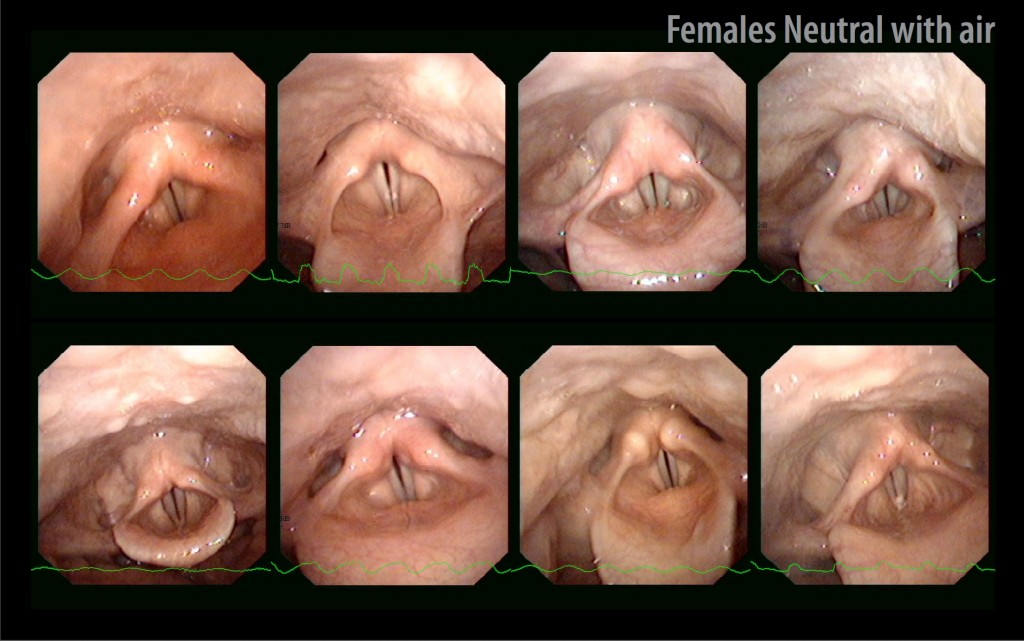Visual & waveform recognition on Neutral with air on 18 larynxes
On the following 8 male and 10 female stills images from the videos both the laryngeal gestures and the waveform in Neutral with air are seen. The stills are extracted from the videos from the endoscopy study performed by Julian McGlashan and Cathrine Sadolin at CVI in Copenhagen in June 2007. The stills are extracted from the videos in the manner previously described. (See Laryngeal recognition in Neutral with air).
When looking at these 18 stills certain patterns are seen in the laryngeal gestures and the laryngograph waveform within each mode.
Notice in Neutral with air the visible gap between the vocal folds, which is bigger at the back. You can see that the back wall of the larynx is relaxed leaving the larynx open so you can see the vocal folds easily. You can also see the aryepiglottic fold is stretcheded and relaxed and the opening of the larynx (the laryngeal inlet) has a shape of an ‘open’ funnel which is rather wide at the top.
Also notice the Neutral with air laryngograph waveform has a sinusoidal shape. This is because there is no contact between the vocal folds due to the gap, which means that a lot of air is added to the sound and the volume is soft. In another example of Neutral with air there is the initial sinusoidal waveform but a brief upward spike indicating momentary closure of the vocal folds.
The Laryngeal gestures and the laryngograph waveform are more to be seen as patterns of progression from mode to mode, rather than absolutes. The larynx, the laryngeal gestures and the waveforms often differ from singer to singer, some singers have really weird waveforms, but still the patterns often show similar features. The progressive change in the patterns can be used as a guideline on how to identify the modes for an individual singer.



